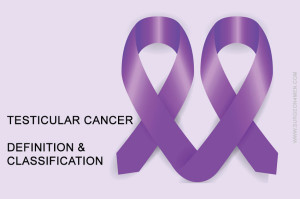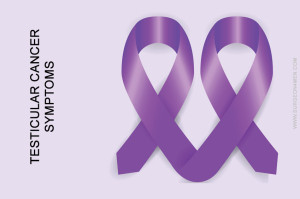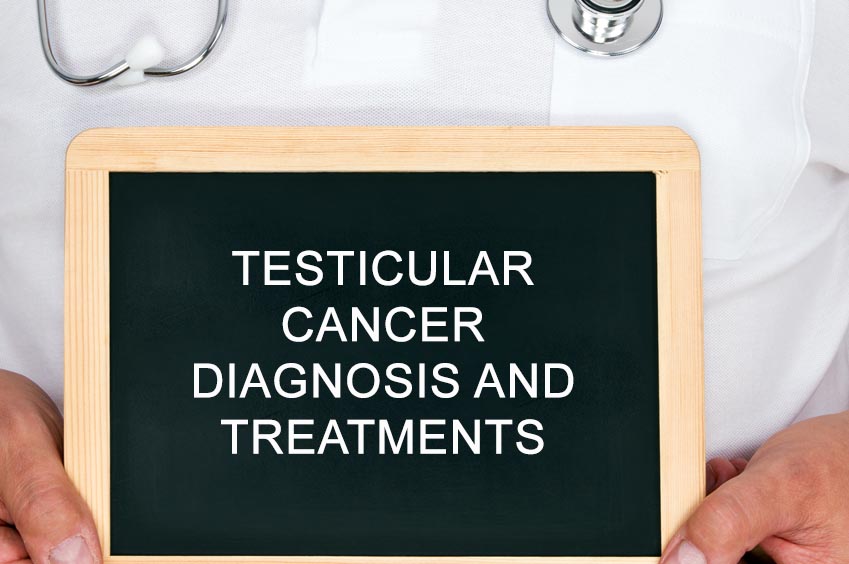Testicular Cancer | Diagnosis and Treatments
Testicular cancer is usually diagnosed on the basis of symptoms. Apart from the symptoms like dragging pain in the scrotal region, there are certain tests to diagnose it. These include:
- Physical Examination: The physician feels the testicles in the scrotal bag. He palpates them for any tenderness or swelling or presence of any lump. He tries to ascertain the size of the lump. He also palpates the inguinal are for the presence of any enlarged lymph nodes, the lower abdomen and other parts of the body in order to look for any signs of spread of the cancer beyond the testicles.
- Ultrasound: Ultrasonography is the test of choice for most doctors for the diagnosis of testicular cancer. The ultrasonologist studies the pattern of echoes from the swelling and helps in differentiating a solid tumor from other swellings in the area like those of hydrocele and varicocele. In case of a solid tumor, the most likely cause is testicular cancer. The doctor may then like to confirm the diagnosis with the help of other tests.
 Presence of Tumor Markers in Blood: Proteins like alpha-fetoprotein (AFP) and human chorionic gonadotropin (HCG) act as tumor markers for testicular cancer. High levels of these tumor markers in blood are suggestive of cancer of testis. Changes in the levels of these proteins may also help in differentiating between different types of testicular cancers. Increase in the levels of an enzyme lactic dehydrogenase (LDH) is suggestive of testicular cancer that has spread beyond the testis.
Presence of Tumor Markers in Blood: Proteins like alpha-fetoprotein (AFP) and human chorionic gonadotropin (HCG) act as tumor markers for testicular cancer. High levels of these tumor markers in blood are suggestive of cancer of testis. Changes in the levels of these proteins may also help in differentiating between different types of testicular cancers. Increase in the levels of an enzyme lactic dehydrogenase (LDH) is suggestive of testicular cancer that has spread beyond the testis.
- Imaging Tests: Imaging tests like CT scan, MRI and PET scan are usually done to ascertain the spread of cancer, efficacy of treatment and possibility of recurrence.
- Bone Scan: It is done to see if the cancer has spread to the bones.
It is important to note that biopsy is usually avoided for the diagnosis of testicular cancer as it may facilitate spread of cancer.
Treatment of Testicular Cancer
Treatment of testicular cancer is based on its pathological type and its stage. However, the preliminary treatment of all testicular cancers except for carcinoma in situ is radical inguinal orchiectomy. This is the surgical removal of the affected testicle.
After orchiectomy, further treatment depends upon the type of tumor and its spread. The testicular tumors are broadly classified into two types- seminomas and non-seminomas.
Treatment of Seminomas
 Seminomas are testicular tumors that are slow growing and respond well to radiation therapy. When detected early, they are nearly always curable. After removing the effected testicle, there are three courses of actions depending upon the stage of the seminoma. These include:
Seminomas are testicular tumors that are slow growing and respond well to radiation therapy. When detected early, they are nearly always curable. After removing the effected testicle, there are three courses of actions depending upon the stage of the seminoma. These include:
- Surveillance in case of early stage seminoma. Imaging tests are done every 3 to 6 months initially and then at a longer interval.
- Radiation therapy targeted at para-aortic lymph nodes in grade I seminomas.
- Chemotherapy either with a single chemotherapeutic agent or combination of several agents depending upon the stage of cancer.
Treatment of Non-Seminomas
Non-seminomas are rapidly growing testicular cancers that respond poorly to radiation therapy. Treatment of these tumors includes:
- Careful observation in case of early cancer.
- Chemotherapy with either single or multiple drugs depending upon the stage of cancer.
- Surgical removal of lymph nodes in case of more aggressive tumors.
Reference:
http://www.cancer.org/cancer/testicularcancer/detailedguide/testicular-cancer-treating-by-stage

